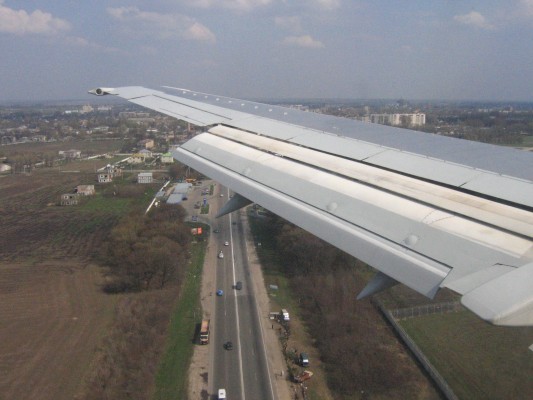
Landing at Borispol airport
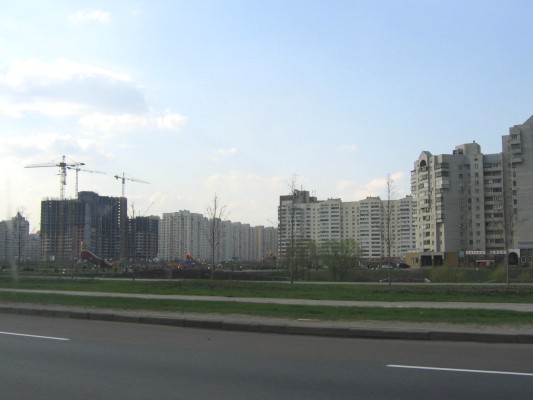
On the road from the airport to downtown
|
This web page is dedicated to Oleg Veklenko on his 60. birthday on August 17, 2010
On April 26, 1986, the fourth reactor at the Chernobyl nuclear power station exploded. One of the liquidators who was called to clean up, the graphic designer Oleg Veklenko, later founded the 4th Block International Eco Poster Triennial in Kharkov, Ukraine, to keep the memory of the ecological catastrophe alive. Twenty years after the catastrophe, he invited the jury members (Laurance Madrelle, Ahn Sang-Soo, Rene Wanner, Subrata Bhowmick, Phil Risbeck, Ruth Klotzel, Yuri Surkov, Vladimir Lesniak) of the 2006 Triennial to visit Chernobyl, a unique opportunity as the public has no acces to the 30 km forbidden zone around Chernobyl. Two jury members, Yuri Surkov (Russia) and Vladimir Lesniak (Ukraine), were not on the trip and joined us later in Kharkov. Nuclear power had a special place in my life, ever since I saw Erik Nitsche's poster Atoms for peace as a boy. Later, I decided to study physics, and actually took an introductory course in reactor design, which bored me however, so I switched to a course about nuclear weapons which was exciting, but too tough for me. Nevertheless, my first job after finishing my studies was in a company that made nuclear instrumentation. It soon went broke, as public admiration for the new technology turned into suspicion and hate. Chernobyl was the final blow to the hopes and aspirations the physicists had after World War 2 to become the high priests of a new society. In the same year my career as physicist ended and I was re-assigned to work with computers. Nuclear power and posters became intertwined again when polish poster designer Franciszek Starowieyski asked me to bring some fresh uncontaminated milk from Switzerland for his boys on my yearly visit to Warsaw in early May 1986 when nobody knew how dangerous the radioactive fallout from Chernobyl really was. But I never expected then that my interest in posters, and by the way also a lifelong yearning to see Kiev, would one day give me the chance to visit Chernobyl, and so I am very grateful to Oleg Veklenko that he offered it to me. I readily accepted after veryfying that it was safe to do so, and started to read as much as I could, Wikipedia is a good source and starting point on the Chernobyl disaster.
|
 Landing at Borispol airport |
 On the road from the airport to downtown |
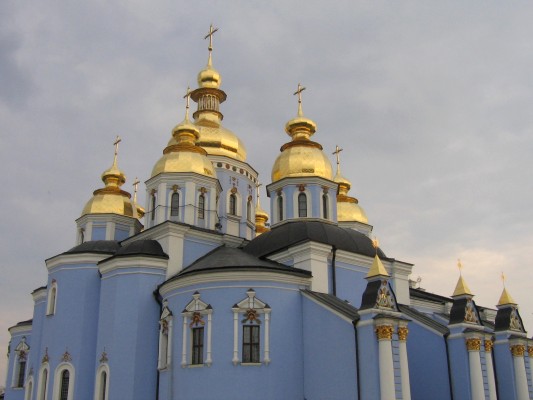 Sightseeing in a city that once was the center of slavic civilization, and now regains its old splendour |
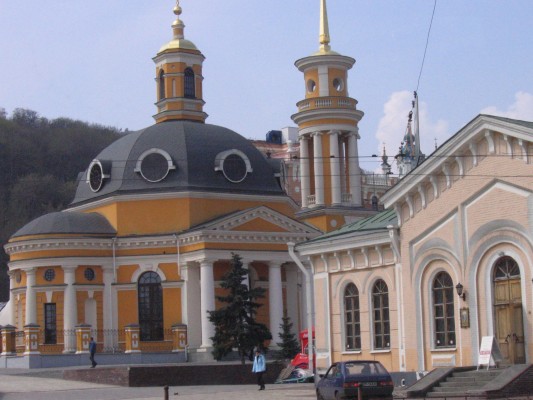 |
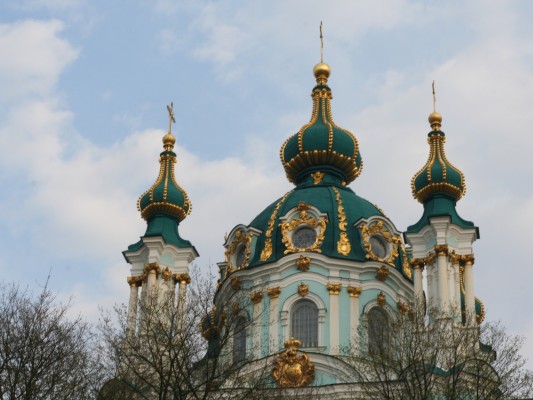 Andreevska Church |
 |
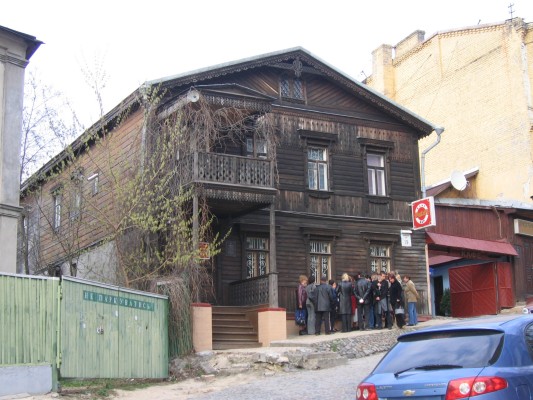 The birthplace of Mikhail Bulgakov, the author of the novel The Master and Margarita |
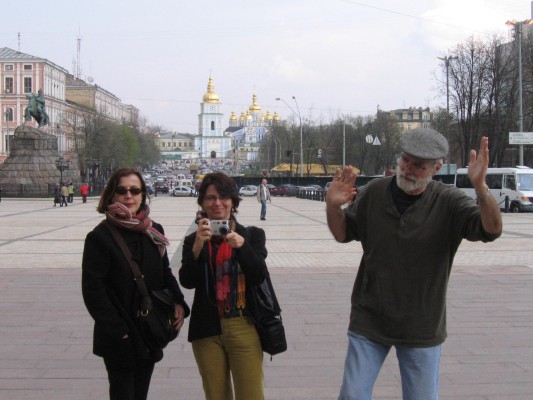 Laurence Madrelle, Ruth Klotzel, Phil Risbeck. The golden domed 18th century church in the background, St. Mikhails Cathedral, was not there when I visited Kiev for the first time in 1997. It was re-built in 1999 with support from ukrainian-american expatriates |
The Chernobyl Museum in Kiev
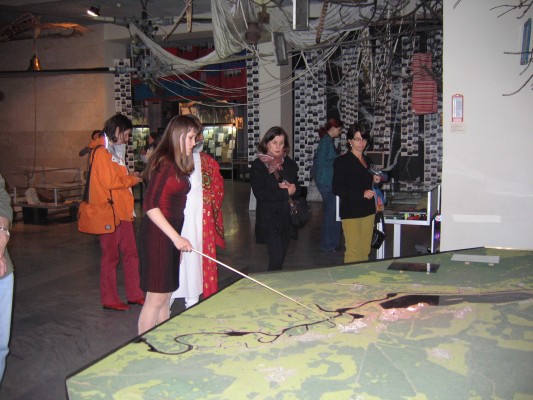 A museum guide showing the Chernobyl area on a scale model |
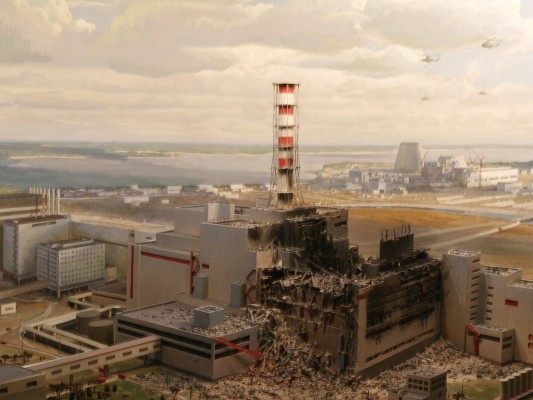 Painting of the 4. Block reactor after the explosion |
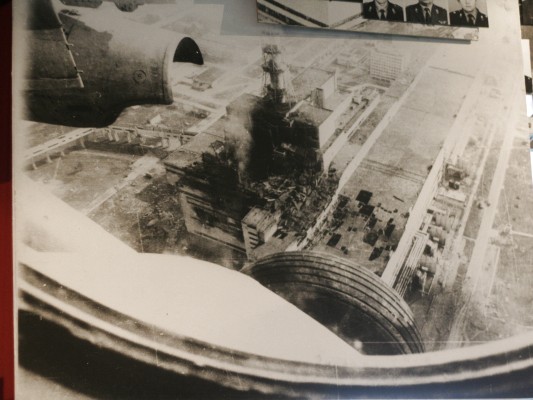 Aerial view of the reactor, possibly taken by Igor Kostin |
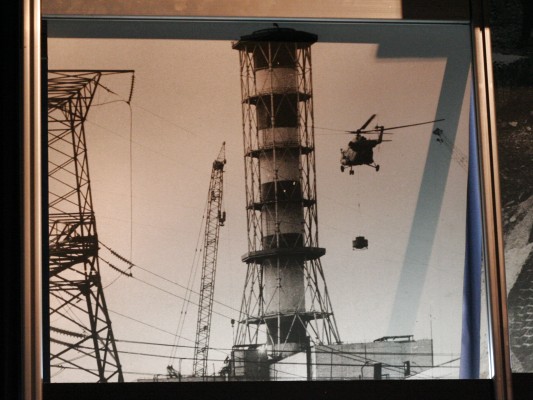 Helicopters dropping sand and lead on the reactor core to extinguish the fire |
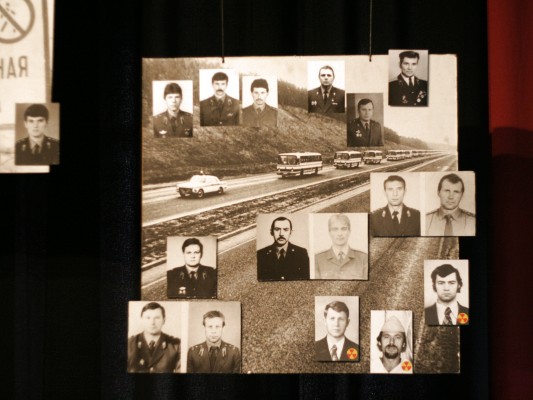 |
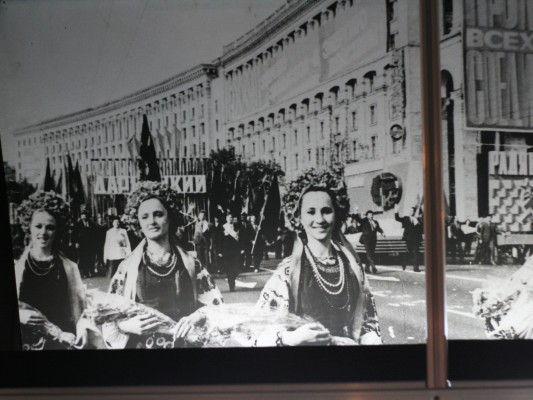 The May Day parade on Khreshchatyk, the main avenue in Kiev, took place as usual. Fortunately for Kiev the winds had blown most of the radioactive cloud towards the west into Belarus and spared the city. |
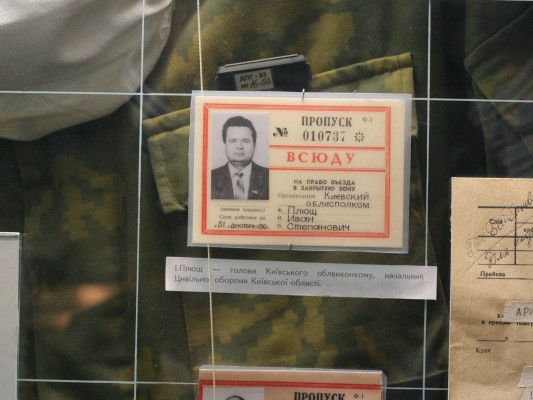 ID card and uniform of one of the operators |
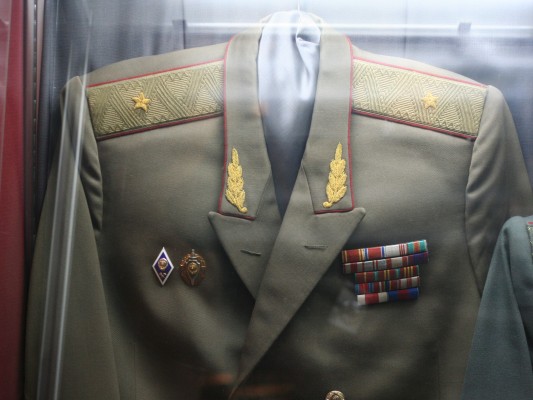 |
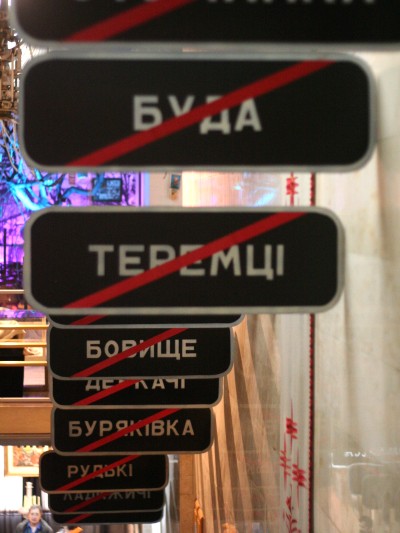 Some of the villages that are now inside the 30 km forbidden area and have become extinguished, |
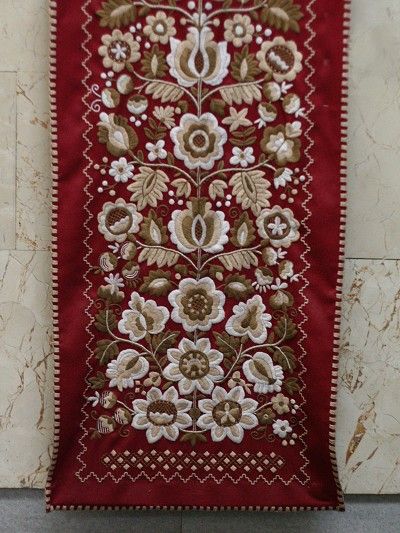 together with their local customs and folk arts |
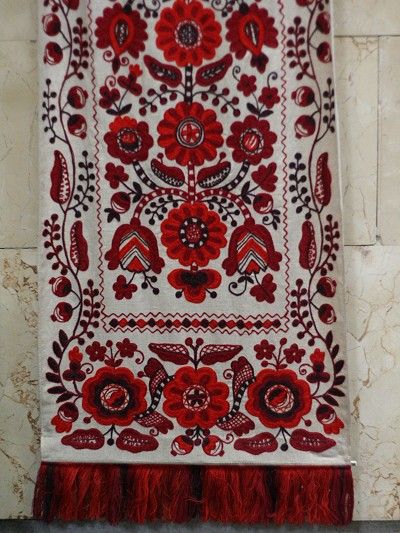 |
 Protective masks and clothing worn by the liquidators |
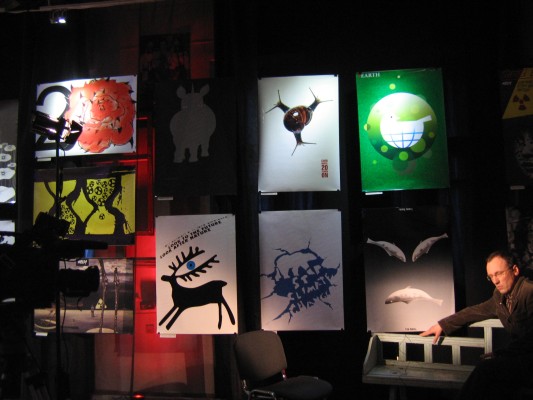 The posters are from previous editions of the "4th Block International Eco Poster Triennial" |
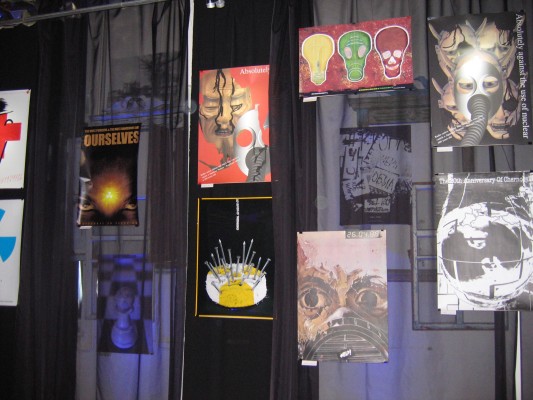 |
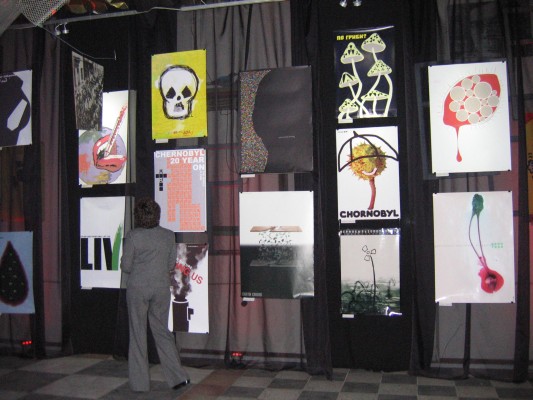 |
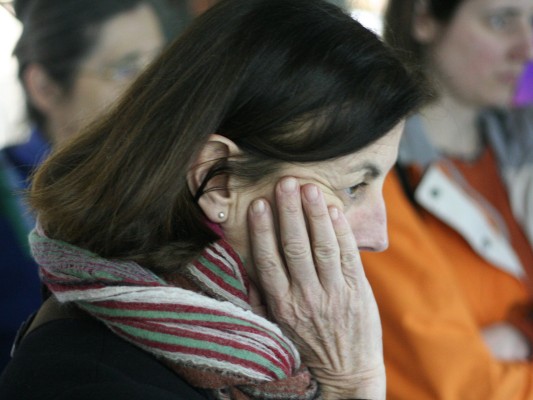 Laurance Madrelle |
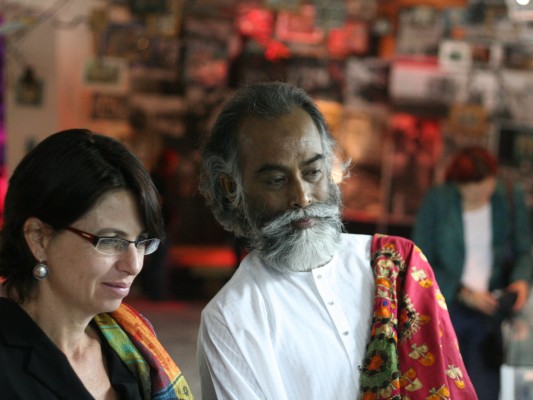 Ruth Klotzel and Subrata Bhowmick |
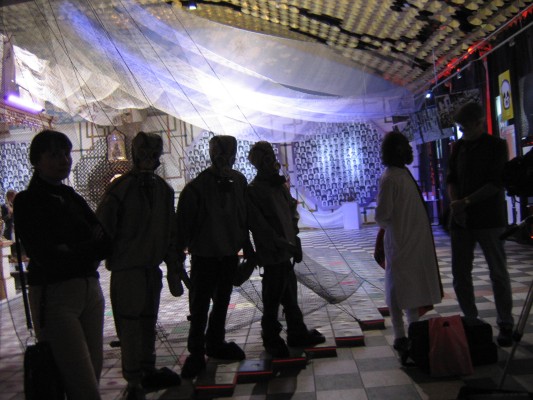 Visitors and mannequins stand on a tiled floor patterned after the layout of the reactor core. The round dots mark the holes into which fuel and control rods are inserted during operation. |
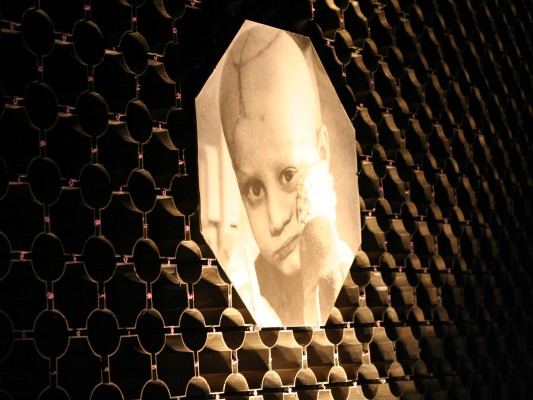 Hundreds of children developed thyroid cancer from the accumulation of radioactive substances in their bodies and about ten have died, but the medical disaster effects have become a political issue and it has become difficult or impossible to discuss them on a scientific basis. Estimated long term casualties range from thousands to millions. |
The Kiev Ballet
| Our daughter Verena who knows Kiev well, and had also introduced me to Kiev, Kharkov, and Oleg many years ago, invited us to the ballet to finish the day: |
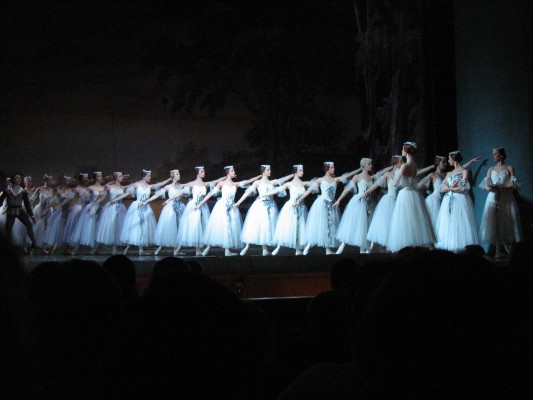 |
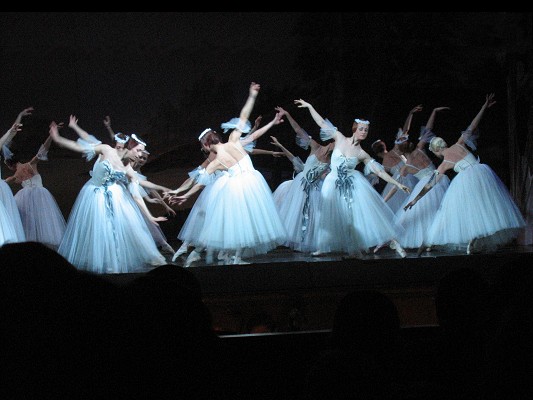 |
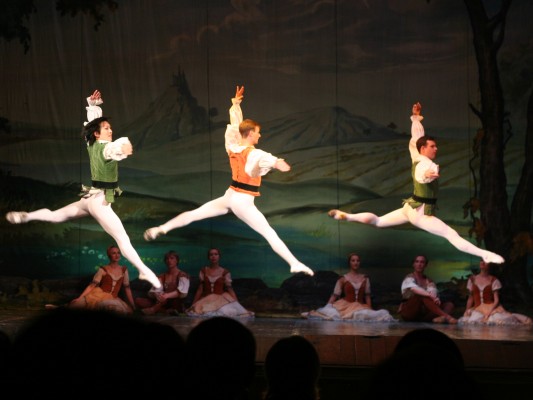 |
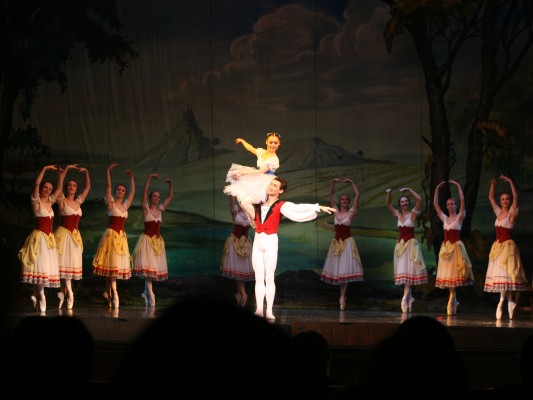 |
The bus trip from Kiev to Pripyat and Chernobyl
| The site of the power station Chernobyl is about 90 km north of Kiev. The staff was living in the small, modern city of Pripyat, 10 km away from their place of work. There are many small rural villages along the road through fields and forests. |
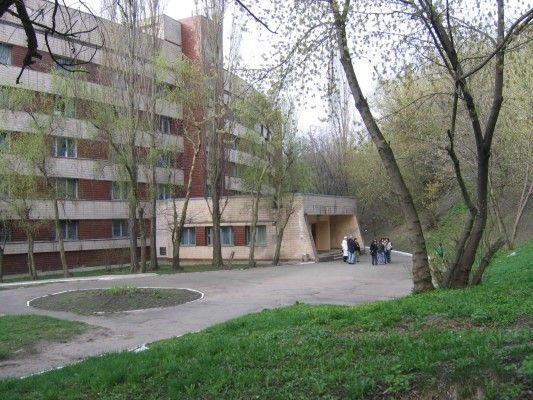 We pick up Ahn Sang-Soo who has come with 8 of his students at the student dormitory |
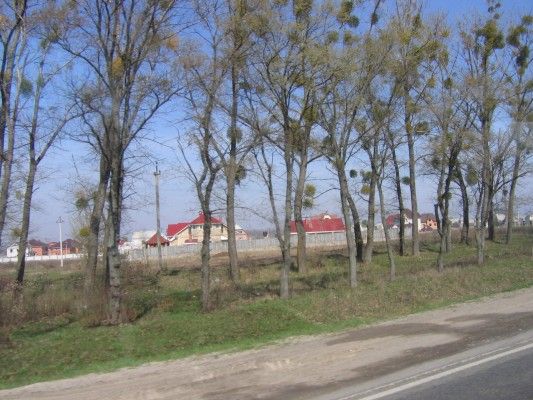 It is a beautiful spring day as we leave Kiev |
View Larger Map |
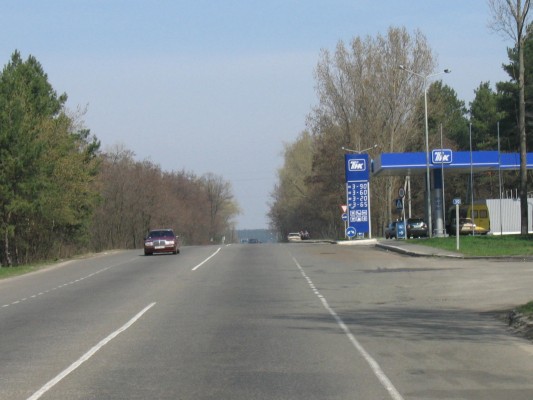 |
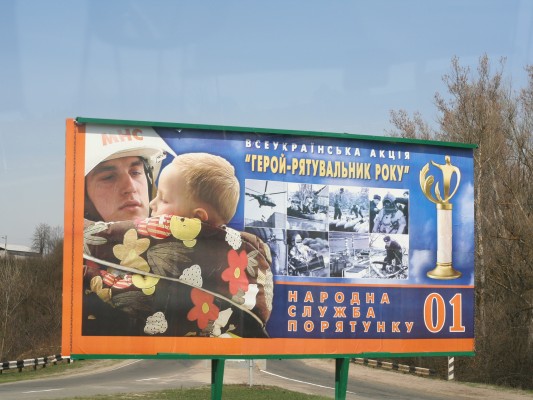 |
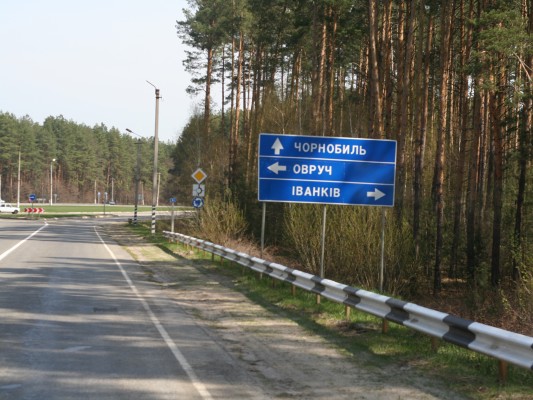 The first road sign to Chernobyl |
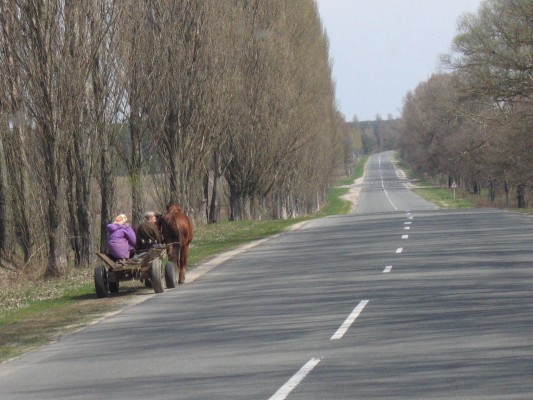 |
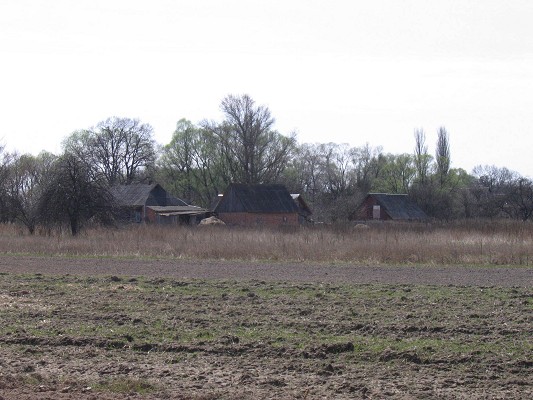 |
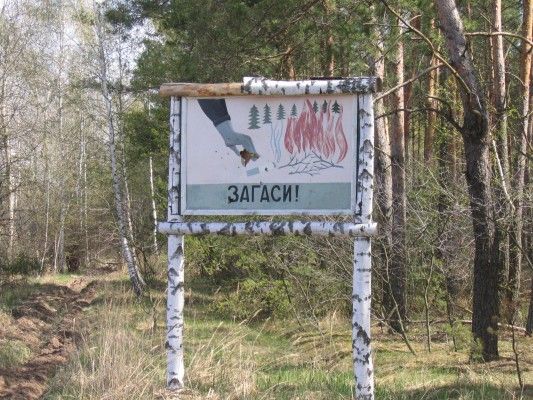 |
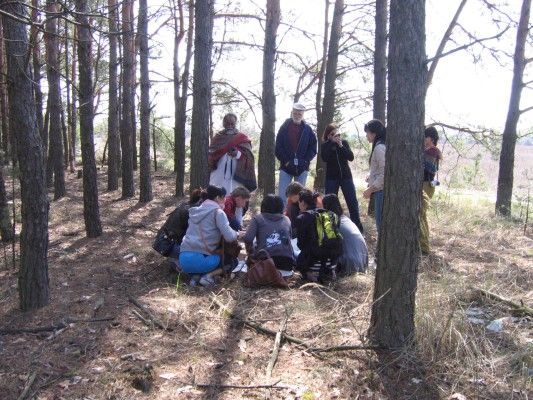 We stop in a forest just outside the 30 km danger zone and have a picnic |
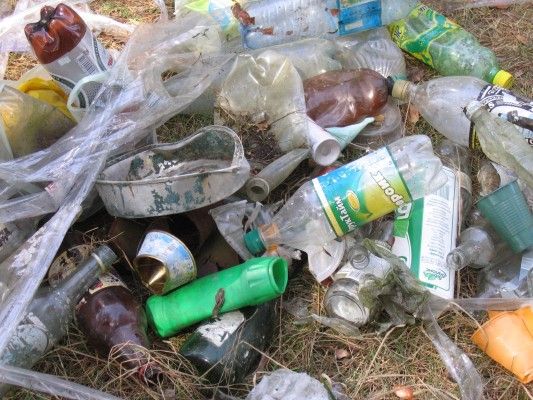 Many have done so before, and the students collect all the garbage |
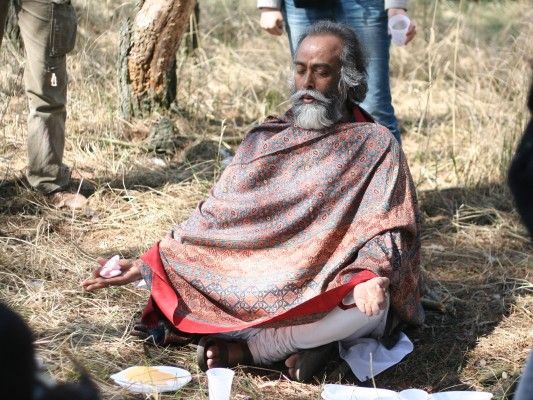 Subrata Bhowmick meditating |
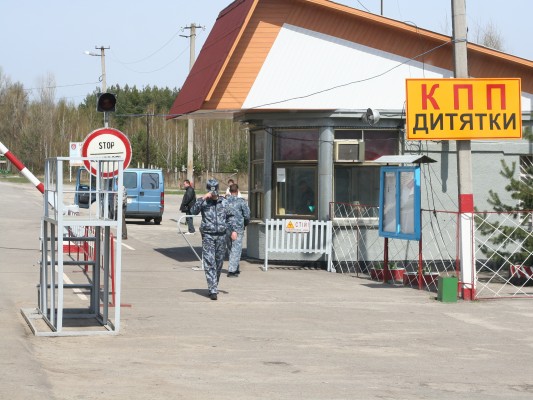 The first checkpoint in Ditiatki The first checkpoint in Ditiatki |
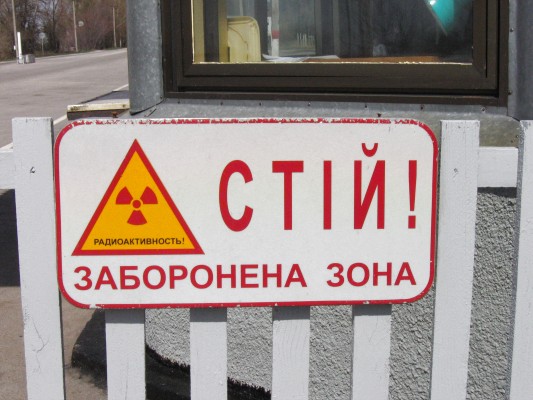 Stop! Closed area, radioactive |
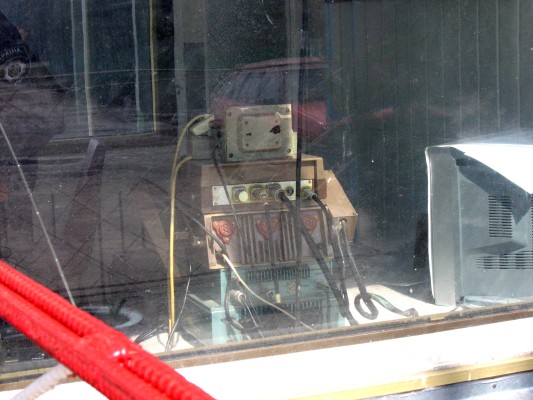 Measuring equipment |
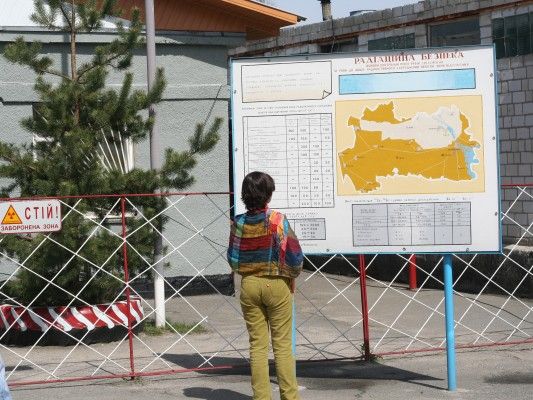 Fishing restrictions |
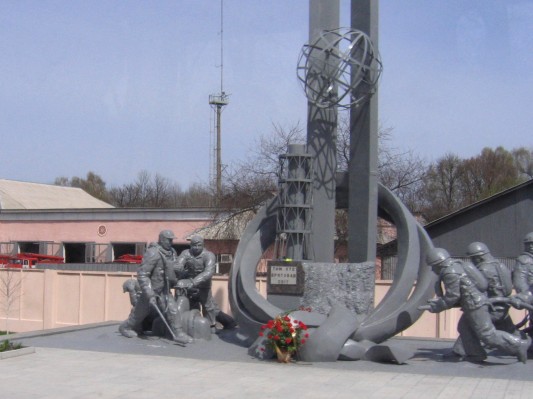 A monument to the liquidators |
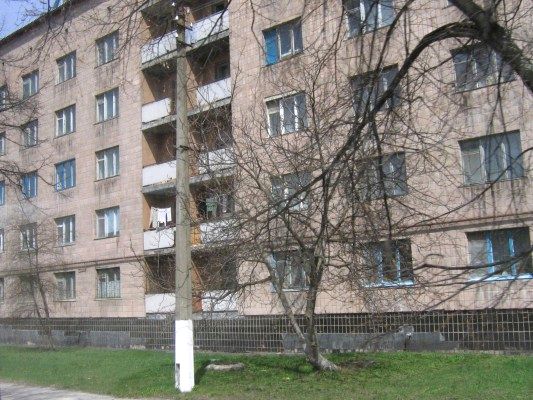 Some houses in the danger zone are still inhabited |
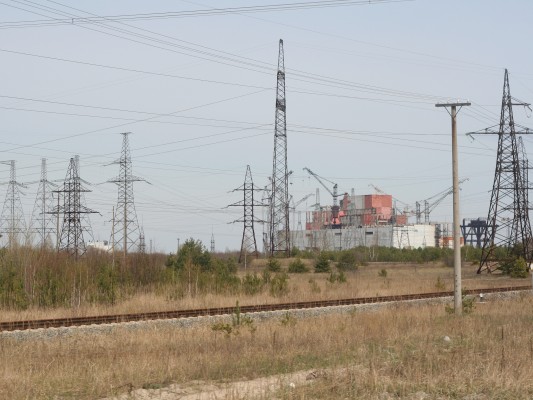 The first view of the 5. Block reactor, almost completed in 1986, but abandoned after the accident |
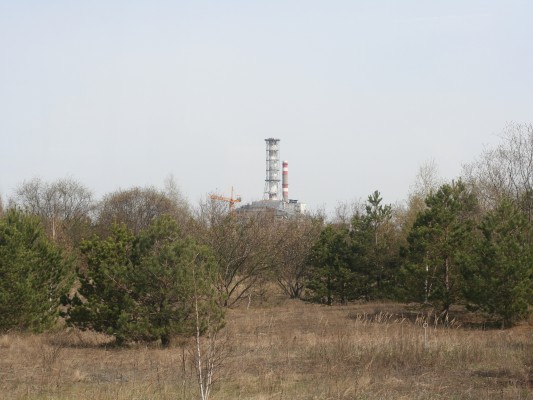 The first view of the 4. Block reactor |
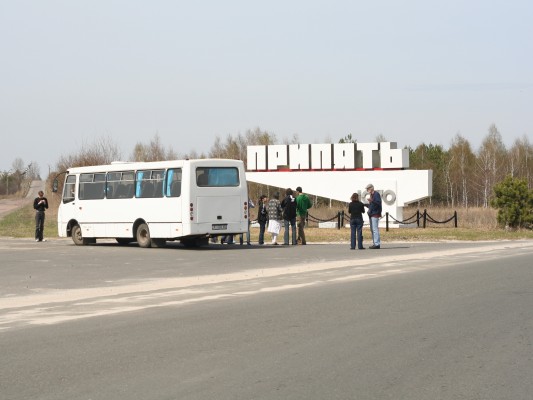 The bus arrives at the city limits of Pripyat |
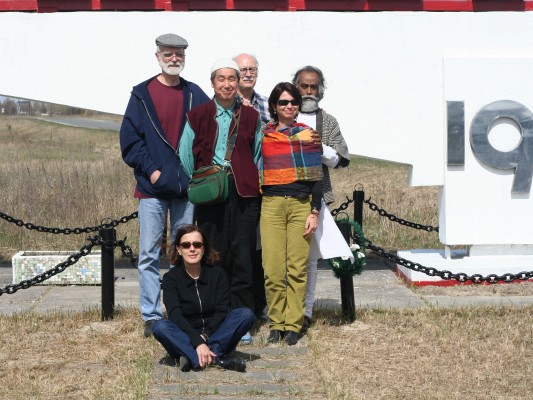 left to right Phil Risbeck, Ahn Sang-soo, Rene Wanner, Ruth Klotzel, Subrata Bhowmick, Laurance Madrell sitting |
Pripyat, a ghost city
| The staff working at the power stations was living in Pripyat, a modern, open and comfortable city of 50'000 inhabitants with an average age of 26, a pearl of soviet achievment. Judged from the size of the hotel, it had many visitors. After the explosion, it took 36 hours before the city was evacuated, after radiation monitors in Sweden had concluded that a serious accident had occured 1000 km away, and the soviet authorities could no longer cover it up. To speed up the procedure, the residents were then told that they need not take much and could return within 3 days. The damage that you see today, the broken glass and marble, is not due to the explosion, but the effect of missing maintenance over the last 20 years. I have seen abandoned canadian mining towns that were in worse condition. |
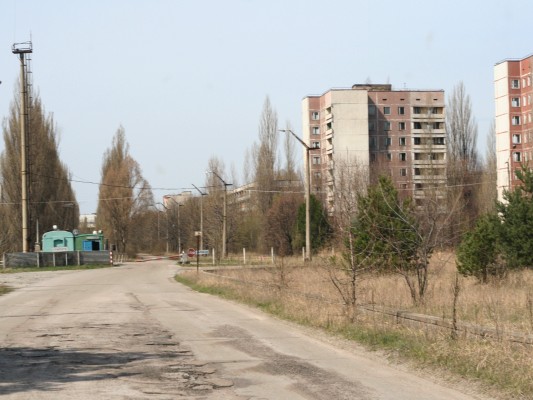 Another checkpoint just bevor entering Pripyat |
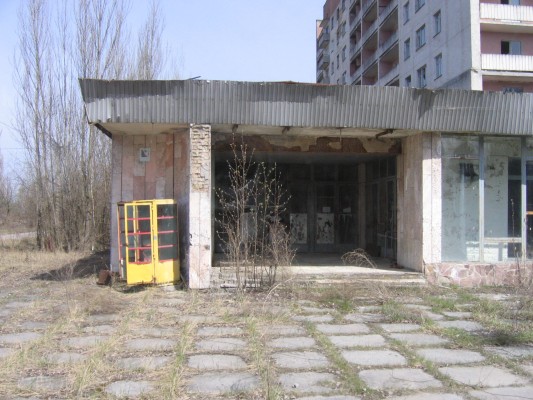 Arriving at the bus station |
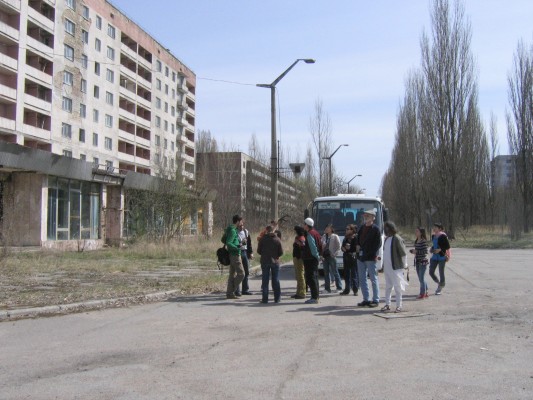 not quite knowing what to do |
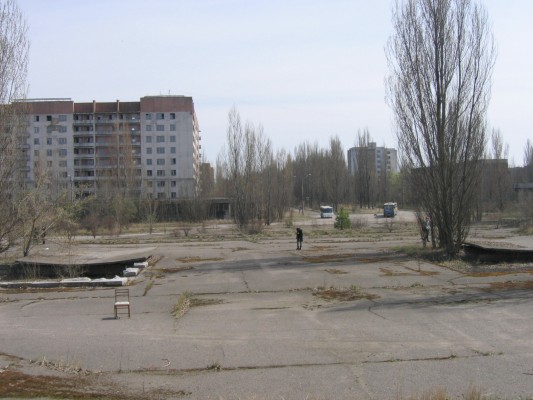 we were almost alone, another bus just left, no guided tours, no fenced off areas, no guards, no marked hotspots, we were free to go as we pleased |
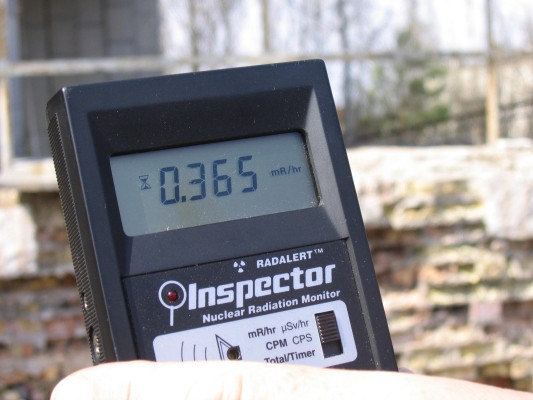 The radiation level on the main square was around 0.3 mRem/hr, varying from spot to spot. At this rate, it would be about 10 times higher than the world average, and our 2 hour stay would give us an additional radiation dosis equivalent to about one tenth of a medical X-ray |
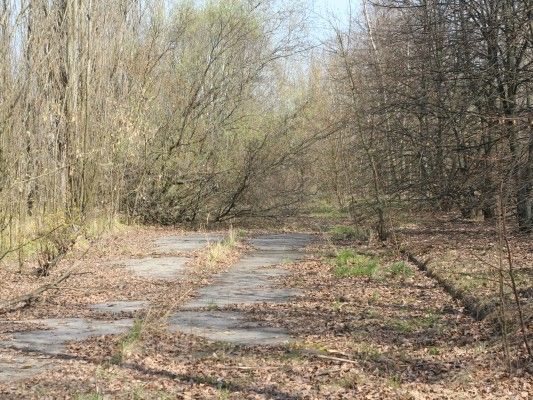 some streets are already grown over |
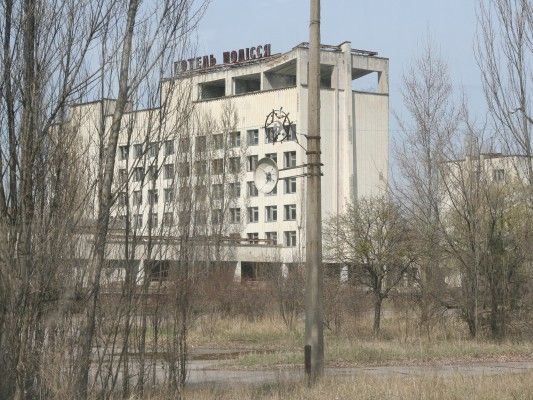 There was a Hotel Polissia |
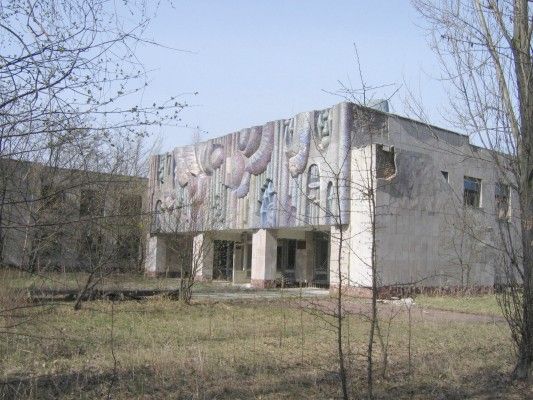 and a gallery? |
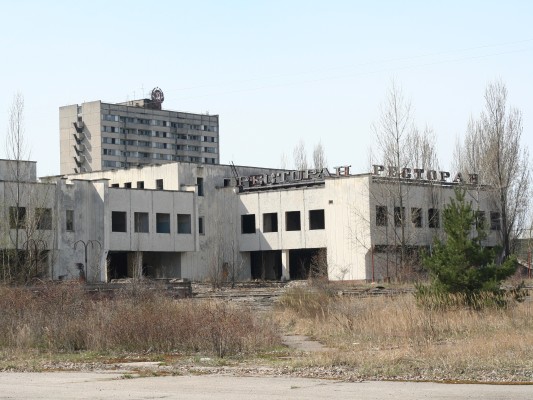 a restaurant |
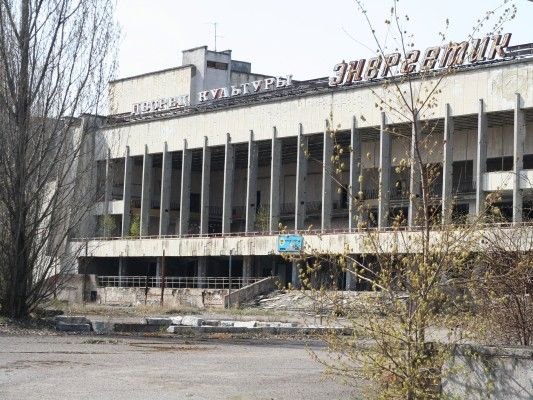 and House of Culture "Energetik" |
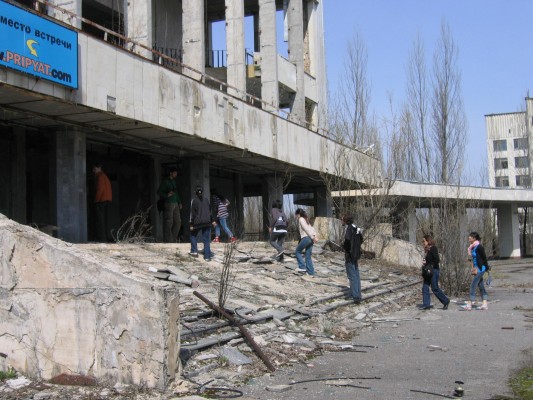 all doors were open |
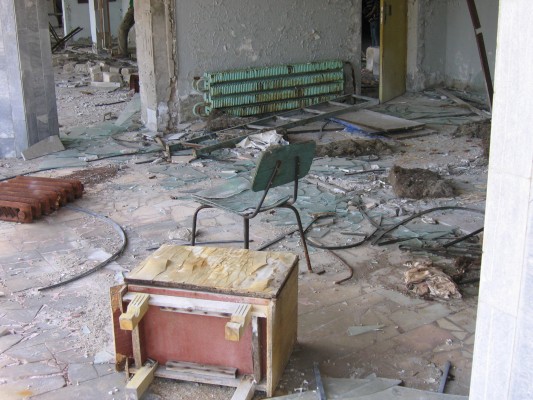 |
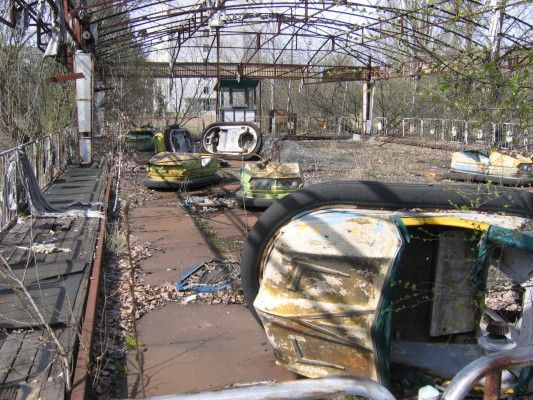 The scooter hall |
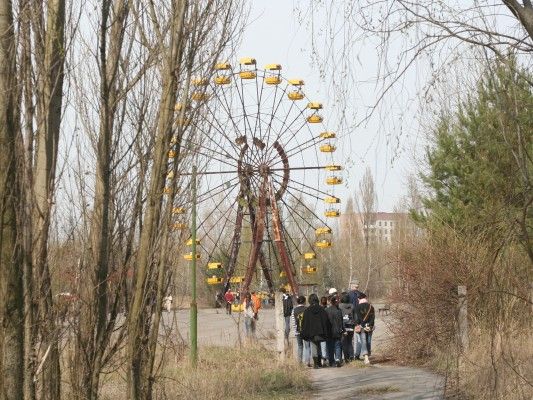 and the famous Ferris wheel |
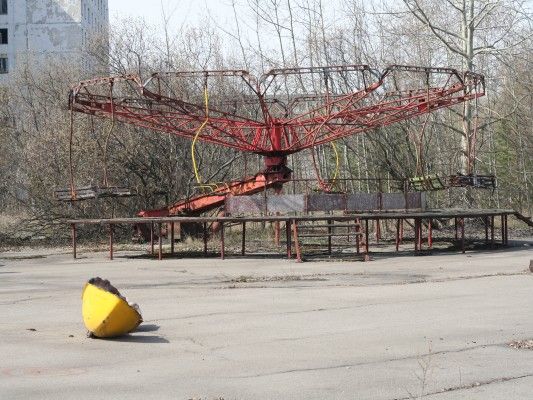 a carousel |
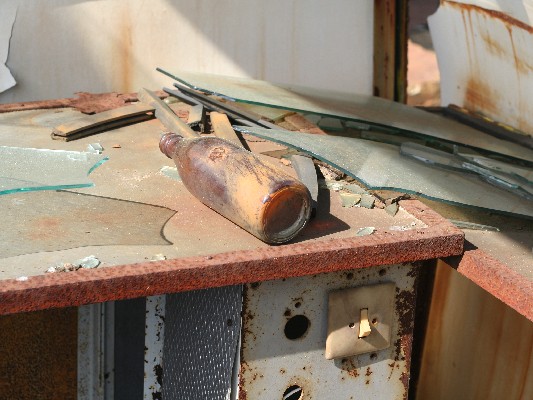 and the cashier's desk |
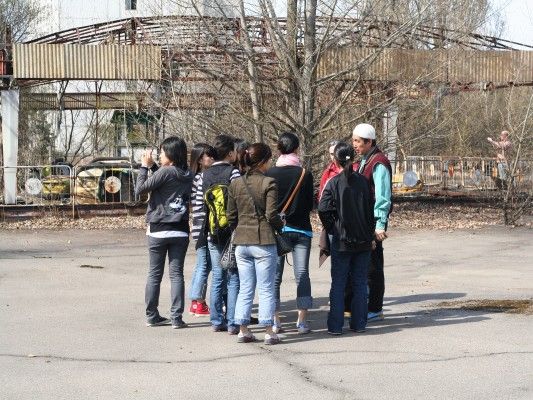 Ahn Sang-soo explains to his students what happened |
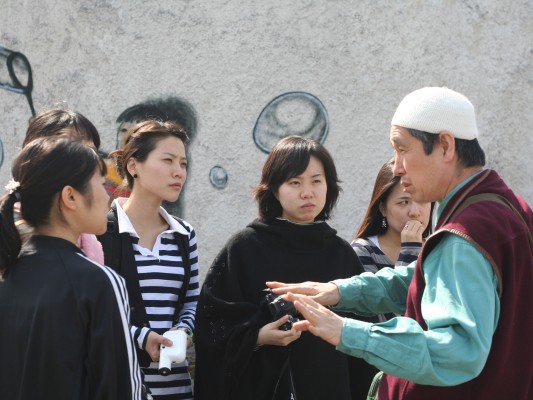 |
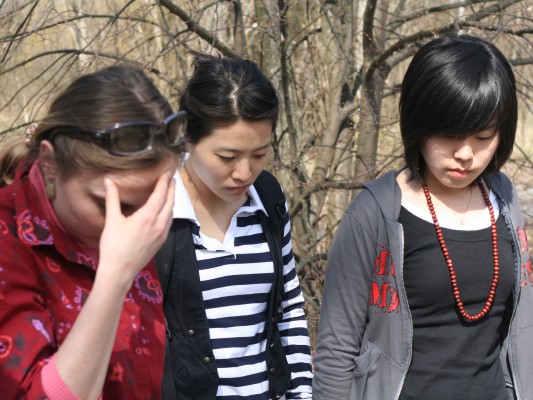 some are visibly shaken |
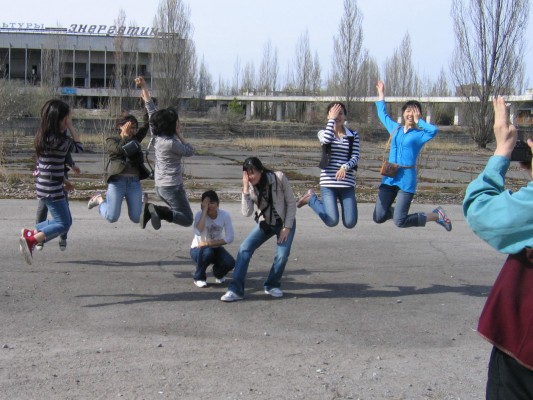 but recover quickly to invent a new variant of Ahn's "one eye picture" |
The 4. Block reactor in Chernobyl
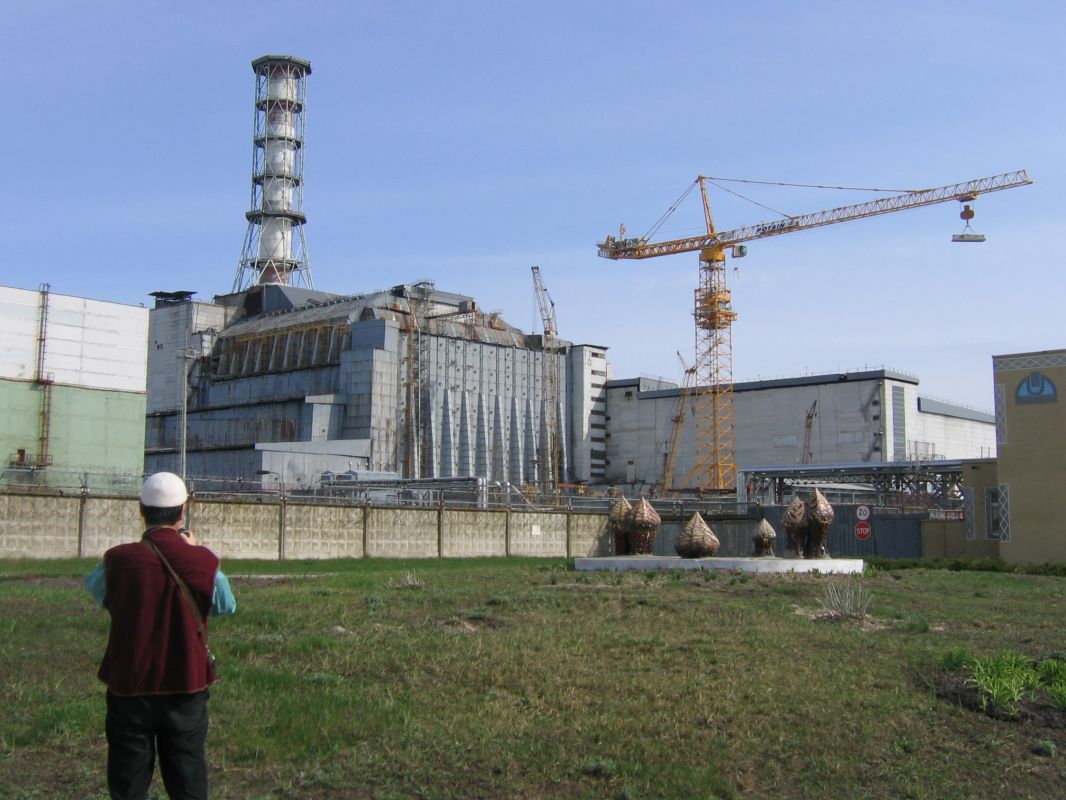 The 4. Block in Chernobyl, the reactor that blew up on April 26, 1986. Ahn Sang-soo is taking a picture. The sarcophagus is the gray concrete structure that is enclosing the radioactive debris. The brown sculptures in the foreground are from a contemporary artist |
 A 360 deg panorama of the visitor parking area |
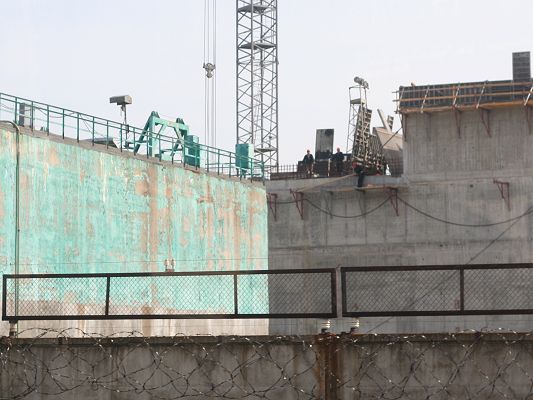 All Chernobyl reactors are now switched off, since December 2000, but still contain radioactive material and have to be maintained and monitored, so a number of people are still working on the site. |
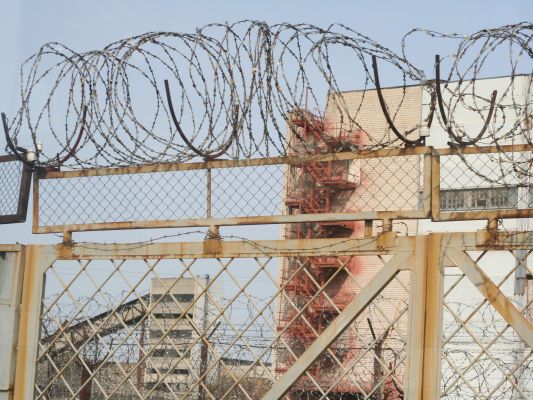 The area is secured with electrically charged barbed wire |
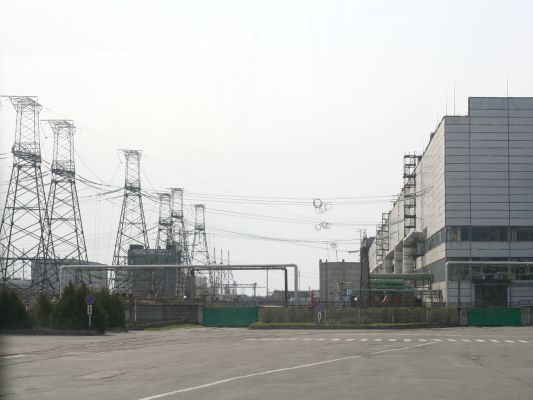 This is how the system is supposed to work: Electricity is flowing out of clean gray boxes, almost by itself |
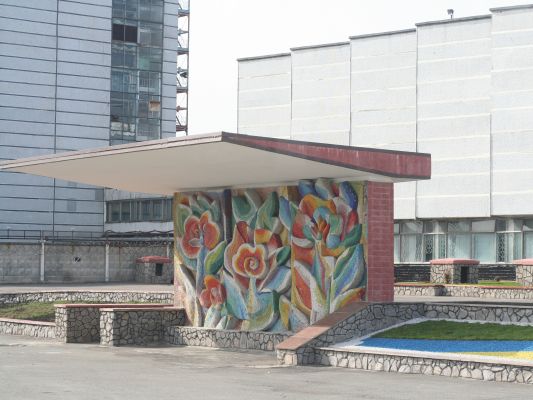 A bus station for the present staff, in front of the administration building A bus station for the present staff, in front of the administration building |
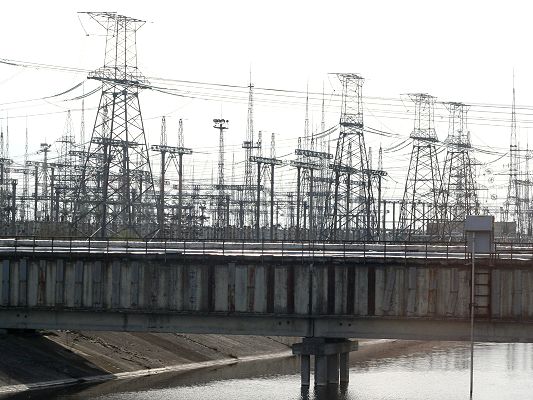 The power distribution systems are still in place, although no more electricity is produced |
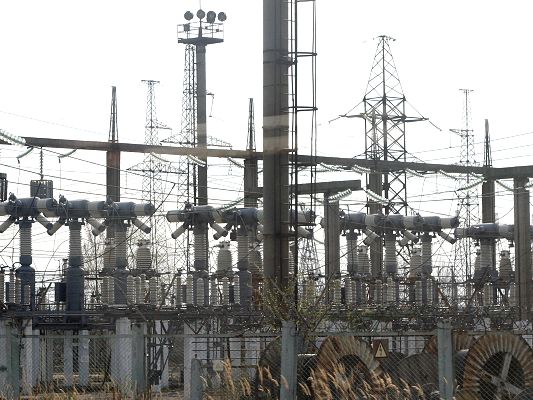 |
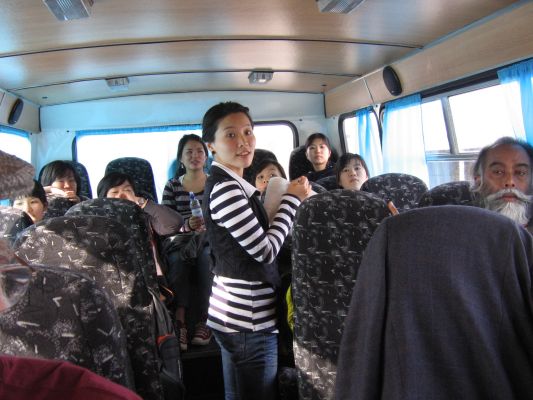 Finally back on our bus |
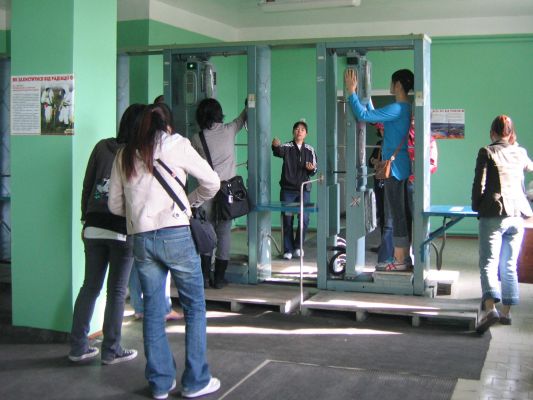 At the checkpoint, we are checked for traces of radioactivity on hand and feet |
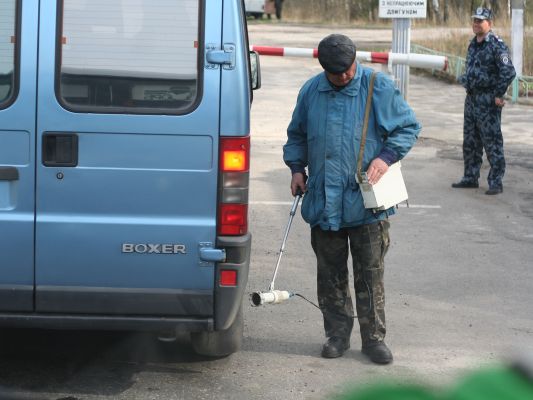 The car tires are also checked for contamination (but not for profile!) |
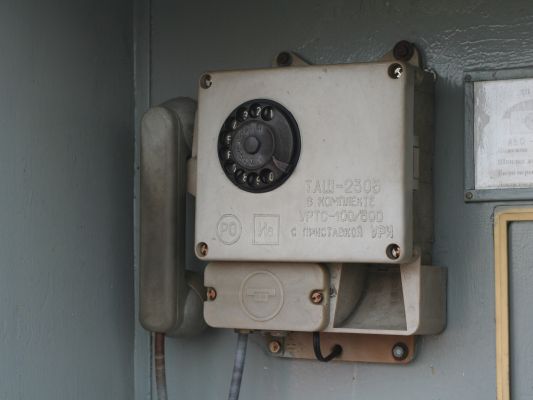 |
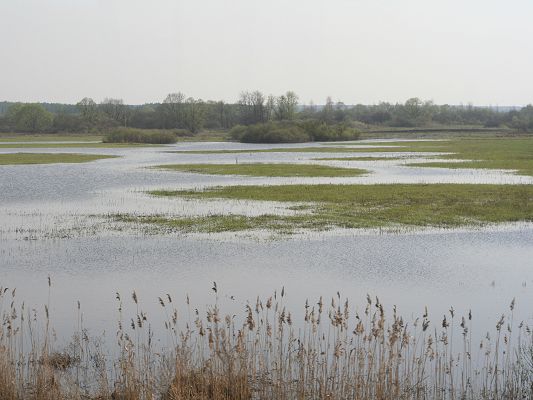 It is a beautiful warm evening in spring |
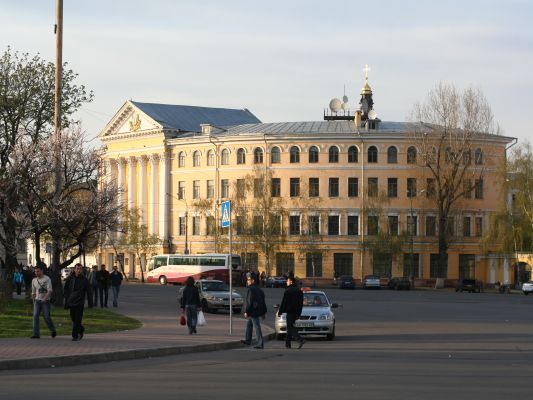 and we are soon back in Kiev where we take the night train to Kharkov |
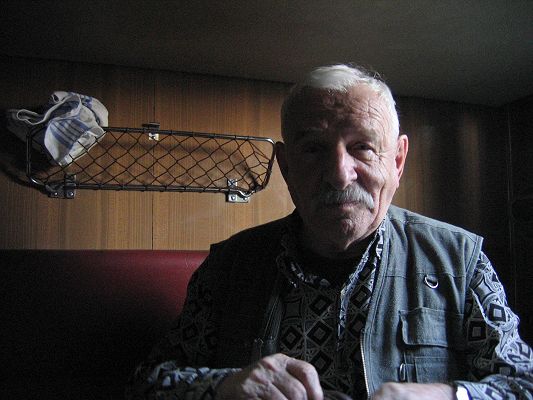 I share my compartment with an 86 year old ukranian engineer who greets me next morning with "Khristos voskres!" (Christ has risen!), the traditional ukrainian Easter greeting. To my surprise, he then takes out a small digital camera and shows me pictures of his family on the screen. |
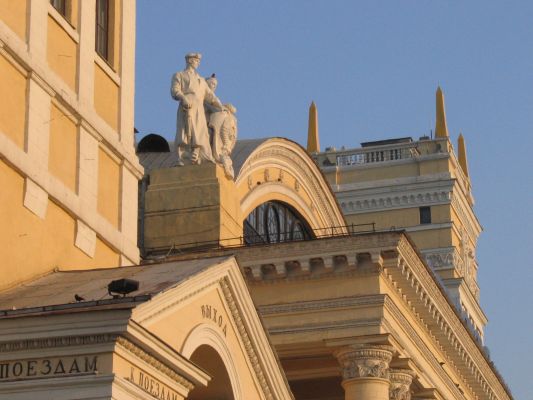 At Kharkov railway station, we are picked up by Oleg Veklenko and his crew and our jury duty for the 6. International 4th Block Triennial of Eco Posters 2006 begins. |
I am using Wikipedia's spelling of place names like Kiev, Chernobyl, Pripyat and Kharkov. The ukrainian spelling would be
Kyiv, Chornobil, Pripiat, Kharkiv.